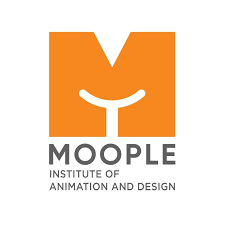The world is gradually moving toward or shifting into the digital experience. The intuitive designs of every application, website, and digital platform remain a need. But who creates such seamless experiences? UI/UX designers. Maybe UI/UX design is for you if you are very much captivated by creativity and problem-solving.
Getting your first job as a UI/UX designer can appear challenging. There’s tough competition and sky-high expectations. But you know what gives you an upper hand? You guessed it—a structured course on UI/UX. And what does such a course help you with? Not just learning theory but hands-on skills, so you are totally ready for your first design job. Let us now see in what ways taking a UI/UX course might just open that first design job for you.
What is a UI/UX Course?
A UI/UX course teaches a student about UI design and UX, which are the core elements that will make any digital product friendly to use, beautiful, and enjoyable.
Students of a UI UX designing course learn the following:
- How to create user-friendly applications and websites.
- The psychology behind user behaviour.
- How to create wireframes, prototypes, and interactive designs.
- Research, usability testing, and iteration get utmost importance.
- Hands-on experience in the usage of tools like Figma, Adobe XD, and Sketch.
An organised curriculum that not only teaches theories. It should also provide real-life projects to help the student build a strong portfolio. These are a must for landing that first design job.
How a UI/UX Course Can Help You Get Hired
1. Industry Relevant Skills
Employers today need not only theoretically knowledgeable designers but people who would implement real-world design principles. The cutting edge for UI/UX designers would now be able to make user-friendly, aesthetically pleasing, and functional digital products. A good course on UI/UX makes the difference between learning and doing so that students are not only able to understand concepts but be able to bring them into play in practical reality. Students go from wireframing to interactive prototypes, providing hands-on experiences needed to meet industry standards and expectations from day one.
2. Design Thinking & User Research
The perfect UI/UX designer is more than a good designer. He or she is a problem-solver. So therefore, one must know the user to do that. A course on UI/UX will teach students about intensive user research and behaviour pattern analysis with decisions towards improving the design to benefit the user. That’s why companies hire such people, because a good designer means he can build intuitive, user-friendly, and need-based for the customer. Whether it is frictionless e-commerce checkout or compelling mobile app interface, the knowledge of how users think and interact with technology is a key point.
3. Knowledge of New Design Tools
UI/UX design is a technologically driven profession. To be able to keep pace requires knowing the right tools. Superior digital experiences are delivered through tools such as Figma, Adobe XD, Sketch, and InVision. These tools, in a well-structured UI/UX course, are learnt by the students and can be used effectively and creatively. The mastery of industry-standard software makes these students more confident with their skills and increases their appealability to employers who need professionals with practical experience in using these tools.
4. Portfolio Building
In UI/UX, a portfolio is essentially your resume. It really makes all the difference while getting selected for an opportunity, especially if a well-planned portfolio has diverse projects. The systematic course prepared multiple projects, like friendly websites, applications, and many more, which are needed to be included. Each one of them assists in showing creativity, problem-solving, and technology skills. More often than not, hiring managers consider portfolios and not degrees when hiring candidates since a well-built portfolio is evidence of the kind of candidate he or she requires.
5. Networking and Mentorship
Not just about what you know in the UI/UX world, but who you know. Good courses for UI/UX connect students with mentors, industry professionals, and fellow learners. Unlocking ways of collaboration, referrals, and even finding career opportunities you would never normally find otherwise through job searches. Direct learning with experts and having constructive feedback on your work will be a changeover in growing your career to the fastest extent.
6. Experience with Real Projects
The best way to understand UI/UX would be through practice. The majority of the courses have live client work and internships as part of the syllabus. Students would not just study theory but master the skills they learnt. Doing actual business problems gives that confidence to the student for stepping into the job market. After finishing the course, they are ready for real design challenges, making them the first choice of employers.
7. Placement Assistance & Career Support
Career support is one of the biggest benefits of joining a structured UI/UX course. Many courses offer resume-building workshops, interview training, and job placement assistance. This is to place the students in their first design job. It is really a very difficult process to manage the job market, especially for freshers; however, if industry professionals are guiding them, then students get skills and confidence to ace their job interviews and negotiate better salaries. Career support ensures that the students are trained and well prepared to launch into their careers in UI/UX design.
Why Should You Enrol at Moople Academy?
In today’s job market, merely having the right skills does not suffice. You require expertise, hands-on projects, and industry experience. At Moople Academy, we do not merely teach you UI/UX. We prepare our students for great careers.
- Practical Training: Students learn hands-on projects reflecting real-life problems.
- Industry-Standard Tools: Tools like Figma, Adobe XD, and Sketch as industries use.
- Live Projects: Working on live projects that are part of real-time UI/UX case studies.
- Portfolio Development: Developing a portfolio to showcase work.
- Placement Support: Resume preparation, interview training, and placement.
Moople Academy provides a perfect setting with the right amount of guidance and training if one is serious about building a UI/UX career.
What Will You Learn in the UI/UX Course?
Course Duration: 5 months (80 hours)
We have divided the course into modules that cover everything from design principles to real-world implementation. Here’s what you’ll learn:
Module 1: Duration of 10 Hours
- Introduction to UX/UI Design
- Design Principles
- Design Elements
- Wireframing
- Software taught: Adobe Photoshop
Module 2: Duration of 26 Hours
- Introduction to Raster Graphics
- Working with Adobe Photoshop
- Web Layout Design
- In this module also, students learn Adobe Photoshop
Module 3: Duration of 12 Hours
- Introduction to Vector Graphics
- Working with Adobe Illustrator
- Image & Vector Artwork creation with Generative AI
- Software taught: Adobe Illustrator
Module 4: Duration of 32 Hours
- Getting Started with Figma
- Designing with Figma
- Web UI Design
- Mobile App UI Design
- Prototyping
- UI & Content Creation with Generative AI
- Software taught: Figma
By the end of the course for UI UX, students not only know their theories but also have practical projects to be showcased to their future employers.
Begin Your UI/UX Journey Today
The need for UI/UX designers keeps on increasing. Every business wants a good-looking app or website, and therefore UI/UX is one of the fastest-growing careers in recent times. But you will need proper training and coaching to start.
A UI/UX course will give you the skills, experience, and portfolio you need to get your first design job. If you’re interested in design, creativity, and user experience, it’s time to start now.
This is where your career in UI/UX begins. Make the first move today!
FAQs
Q1. Is UI/UX a good career in 2025?
Yes! There is a huge demand for UI/UX designers. Companies need designers who come up with user-friendly digital experiences, and this is a lucrative and stable career.
Q2. Do I need to have a degree in UI/UX design to explore a job?
Not necessarily! What counts is your skills, portfolio, and experience. You need a formal education for these. A formal training on a UI/UX course will be enough.
Q3. How long does it take to become a UI/UX designer?
It is dependent upon how fast you learn. A 5-month course can make you ready for the job, and further learning and practice will help you be better at it the more you do it.
Q4. Which industries hire UI/UX designers?
Tech companies, startups, e-commerce, healthcare, gaming, finance, and many others hire UI/UX designers. Anything with a website or an app requires a UI/UX expert.

